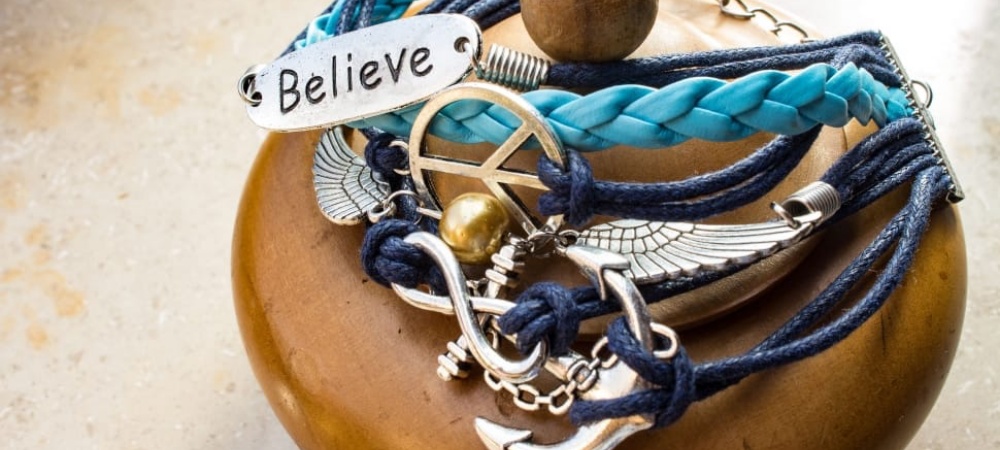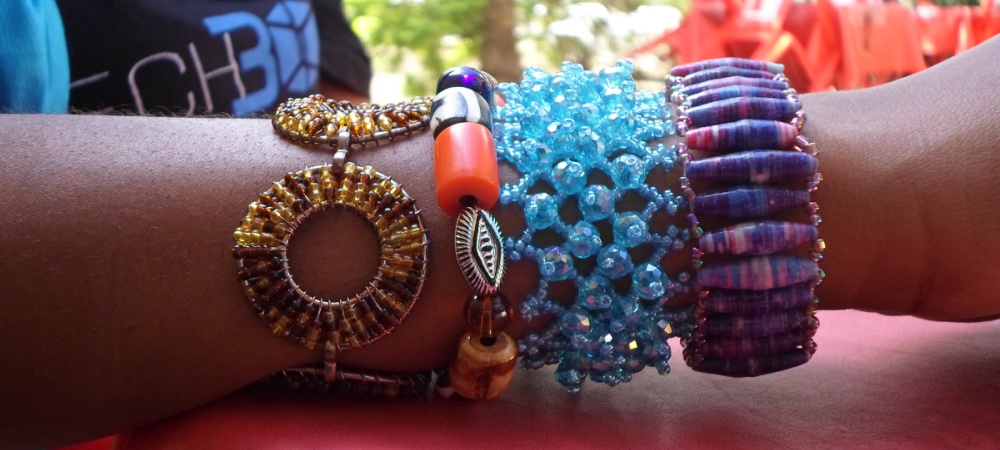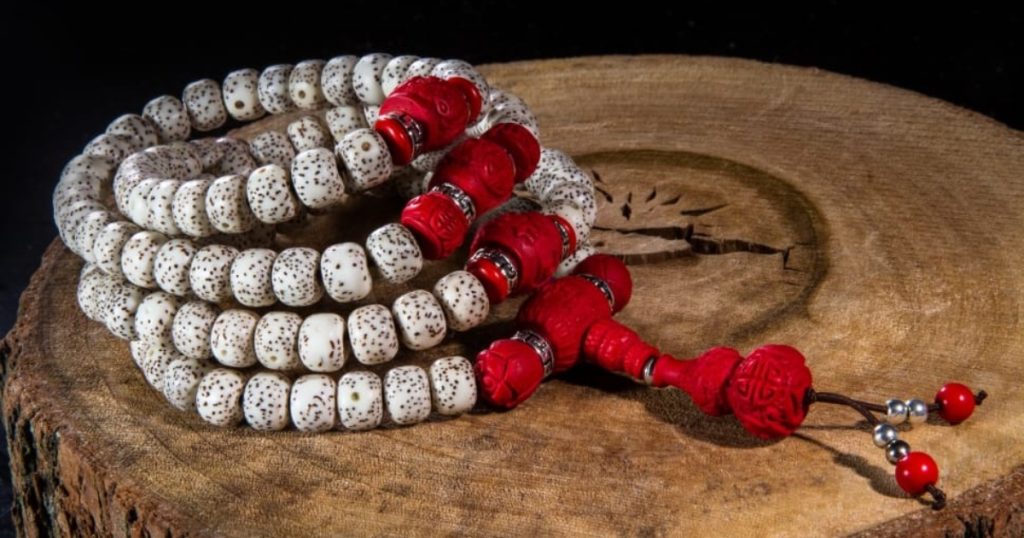Here’s a guide to Bracelet Measurements help you find the perfect fit for your bracelet :
- Measure Your Wrist : Use a flexible measuring tape or a piece of string to measure around your wrist where you intend to wear the bracelet. Make sure the measuring tape or string is snug but not too tight.
- Add Your Desired Fit : Decide how you want your bracelet to fit. Some prefer a snug fit, while others prefer a looser fit. Add about ¼ to ½ inch (0.6 to 1.3 cm) to your wrist measurement for a comfortable fit. If you’re unsure, it’s usually better to err on the side of a slightly looser fit.
- Consider the Style of the Bracelet : Different bracelet styles may require different fits. For example, a snugger fit might be more suitable for a beaded bracelet, while a looser fit could work better for a chain-link bracelet.
- Check Sizing Guides : Many jewelry websites provide sizing guides to help you determine the right bracelet size based on your wrist measurement. These guides often include recommendations for different bracelet styles.
- Try It On : If possible, try on bracelets before purchasing to ensure the fit is comfortable and to see how it looks on your wrist. If buying online, consider whether the retailer offers a return or exchange policy in case the size isn’t right.
- Adjustable Bracelets : Some bracelets come with adjustable clasps or extension chains, allowing for flexibility in sizing. These can be a good option if you’re unsure about the exact size or if you want a bracelet that can be worn at different lengths.
- Custom Sizing : For certain bracelets, especially those made by independent jewelry designers, you may have the option to request custom sizing to ensure a perfect fit. Be sure to provide accurate measurements if opting for this option.
Tools Needed for Bracelet Measurements
To measure a bracelet accurately, you’ll need :
- Flexible Measuring Tape: This will allow you to measure the wrist circumference accurately. Alternatively, you can use a strip of paper and a ruler.
- Bracelet Sizer: If available, a bracelet sizer tool can simplify the process by providing precise measurements.
- Marker or Pen: For marking the measurement on the measuring tape or paper strip.
- Scissors: To cut the paper strip if you’re using that method.
- Assistant (Optional): Having someone help you hold the measuring tape or paper strip steady can ensure more accurate measurements.
These tools will help you get the correct size for your bracelet, ensuring a comfortable fit.

Step-by-Step Guide to Measure Your Wrist
Here’s a step-by-step guide to measure your wrist :
- Gather Supplies : You’ll need a flexible measuring tape or a strip of paper and a ruler.
- Prepare Your Wrist : Ensure your wrist is relaxed and in a neutral position. If you’re measuring for a watch or bracelet, it’s best to measure the wrist you plan to wear it on.
- Wrap the Measuring Tape : If you’re using a measuring tape, wrap it around your wrist at the widest point. Make sure the tape is snug but not too tight. If you’re using a strip of paper, wrap it around your wrist and mark where the end meets.
- Record the Measurement : Note the measurement where the tape or paper meets. If you used a strip of paper, you can measure the marked length with a ruler.
- Check the Measurement : Ensure that the measurement is accurate and that the tape or paper is not twisted or bunched up.
- Repeat for Accuracy : For the most accurate result, measure your wrist a couple of times to confirm the measurement.
- Record the Measurement : Write down or remember the measurement for future reference, especially if you’re buying a watch or bracelet online.
- Consider Comfort : Keep in mind that you may prefer a slightly looser or tighter fit depending on personal preference and the type of accessory you plan to wear.
Tips for Choosing the Right Bracelet Size
Choosing the right bracelet size is important for both comfort and style. Here are some tips to help you select the perfect fit :
- Measure Your Wrist : Use a flexible measuring tape or a piece of string to measure around your wrist just above the wrist bone. Make sure the tape or string is snug but not too tight.
- Add Some Extra Length : Once you have your wrist measurement, add a bit of extra length to accommodate for movement and comfort. Generally, adding about ¼ to ½ inch (0.6 to 1.3 cm) to your wrist measurement is a good rule of thumb.
- Consider the Style of the Bracelet : Different bracelet styles may fit differently. For example, a snug fit might be more suitable for a cuff bracelet, while a looser fit could work better for a beaded or chain bracelet.
- Check Sizing Guides : Many jewelry retailers provide sizing guides to help you determine the right bracelet size based on your wrist measurement. These guides often correlate wrist size to bracelet size, taking into account different styles and fits.
- Try Before You Buy (If Possible) : If you have the opportunity to try on the bracelet before purchasing, take advantage of it. This way, you can ensure the fit is comfortable and to your liking.
- Consider Adjustable Bracelets : Adjustable bracelets, such as those with extenders or adjustable closures, offer flexibility in sizing and can be a great option if you’re unsure about the exact size you need.
- Consult with the Retailer or Jeweler : If you’re still unsure about sizing or have specific questions about a particular bracelet style, don’t hesitate to reach out to the retailer or jeweler for guidance. They can often provide personalized advice based on their expertise.
By following these tips, you can confidently choose a bracelet size that fits well and complements your style.

Adjusting Bracelet Sizes
If you need to adjust the size of a bracelet, there are a few methods you can try depending on the type of bracelet and its materials.
- Adding or Removing Links: For metal bracelets, you can usually adjust the size by adding or removing links. Many metal bracelets have removable links that can be taken out with a small tool like a watch pin remover. This method allows you to customize the size to fit your wrist comfortably.
- Adjustable Straps: Some bracelets, particularly fabric or leather ones, have adjustable straps with buckle closures. You can adjust the size by moving the buckle to a different hole in the strap, allowing for a tighter or looser fit.
- Stretch Bracelets: Elastic or stretch bracelets are designed to stretch to fit comfortably over your hand and onto your wrist. If the bracelet is too tight, you can gently stretch it to accommodate your wrist size. Be careful not to pull too hard and risk damaging the bracelet.
- Adding Extenders: If a bracelet is just slightly too small, you can often add an extender chain or clasp to increase the length. These extenders are typically available at jewelry supply stores and can be attached to the existing clasp of the bracelet to provide additional length.
- Professional Adjustment: For more complicated adjustments or bracelets with specialized clasps, it may be best to take the bracelet to a professional jeweler. They have the expertise and tools to make precise adjustments without damaging the bracelet.
Conclusion Bracelet Measurements
Obtaining accurate measurements for Bracelet Measurements is crucial for ensuring a proper fit and customer satisfaction. By following standardized methods and considering factors such as wrist size, preferred fit, and bracelet style, jewelers can provide personalized recommendations and enhance the overall shopping experience.
